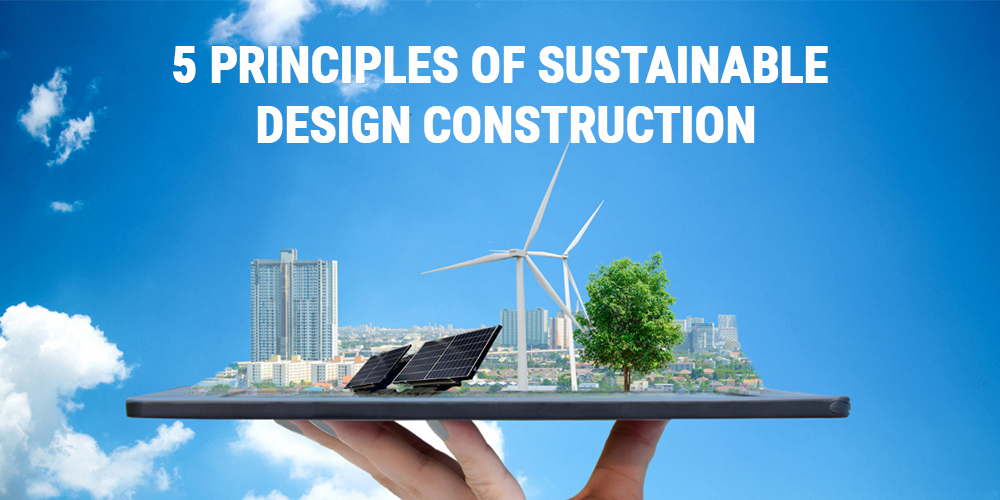Construction of a building means utilizing energy resources, materials and a lot of water. More than that, construction generates waste that is unfit for the environment. Hence, building owners look for sustainable design construction to minimize the environment’s impact.
Over the years, sustainable architecture gained popularity. Sustainable design construction is not only environmentally friendly but also very economical.
Therefore, individuals can construct energy-efficient buildings by following the sustainable design construction principles.
Here are five principles of sustainable design construction that you can follow:
Overview of Sustainable Design Construction
The concept of sustainable design construction is defined as using eco-friendly material that doesn’t harm the environment. This is also referred to as green construction. The whole construction process emphasizes making energy-efficient buildings and assuring minimum water, land, energy, and natural resources.
Five Core Principles of Sustainable Design Construction
Sustainable architecture design is constantly evolving, but the principles of sustainable design construction remain the same, which are as follows:
1. Optimize the Energy Consumption
The first principle of sustainable construction is cutting down energy consumption. Use natural resources for energy and increase energy efficiency by following the net-zero energy consumption and operating system. Minimize the fossil-fuel dependency to drive energy.
2.Optimize the Site
When designing a new builder, be sure to follow the sustainable design. The same will apply to the existing building reconstruction. Begin with the site election and finish with the landscaping, orientation, rehabilitation, and proper site selection.
Keep in mind that the site of the green building must reduce energy consumption, control water runoff and possess the support of flora and fauna.
3. Optimize Building Space and Use Sustainable Material
Natural resources consumption is constantly increasing. Hence, you need to focus on natural resources and materials for building construction. In addition to this, the sustainable building design in such a way reflects the light and sustainably consumes space.
Using sustainable materials also helps to reduce environmental impacts such as resource depletion, global warming, toxicity and many more.
As per the wbdg.org report, “sustainable material is helpful to reduce the environmental impact and contribute to improving health and minimizing disposal costs.
4. Conserve Water
The fourth core principle of creating sustainable design building is water conservation. Emphasize minimum consumption of water during the construction of the building. Also, make sure to encourage the sustainable design of the building where people can practice recycling of water during construction.
5. Elevate Operational Practices
Architects need to optimize maintenance and operational practices to create a perfect balance with nature. So, do ensure to focus on designing the buildings, requiring minimum maintenance and operational practices.
Additionally, you need to focus on using fewer toxic chemicals to be cost-effective and minimize life-cycle costs.
Bottom Line
The world is moving towards a sustainable approach to constructing the building. Sustainable design construction enhances the integration of sustainable practices. When you practice green building, it directly impacts the social environment and is very economical. These are some of the principles of the sustainable building design approach.

